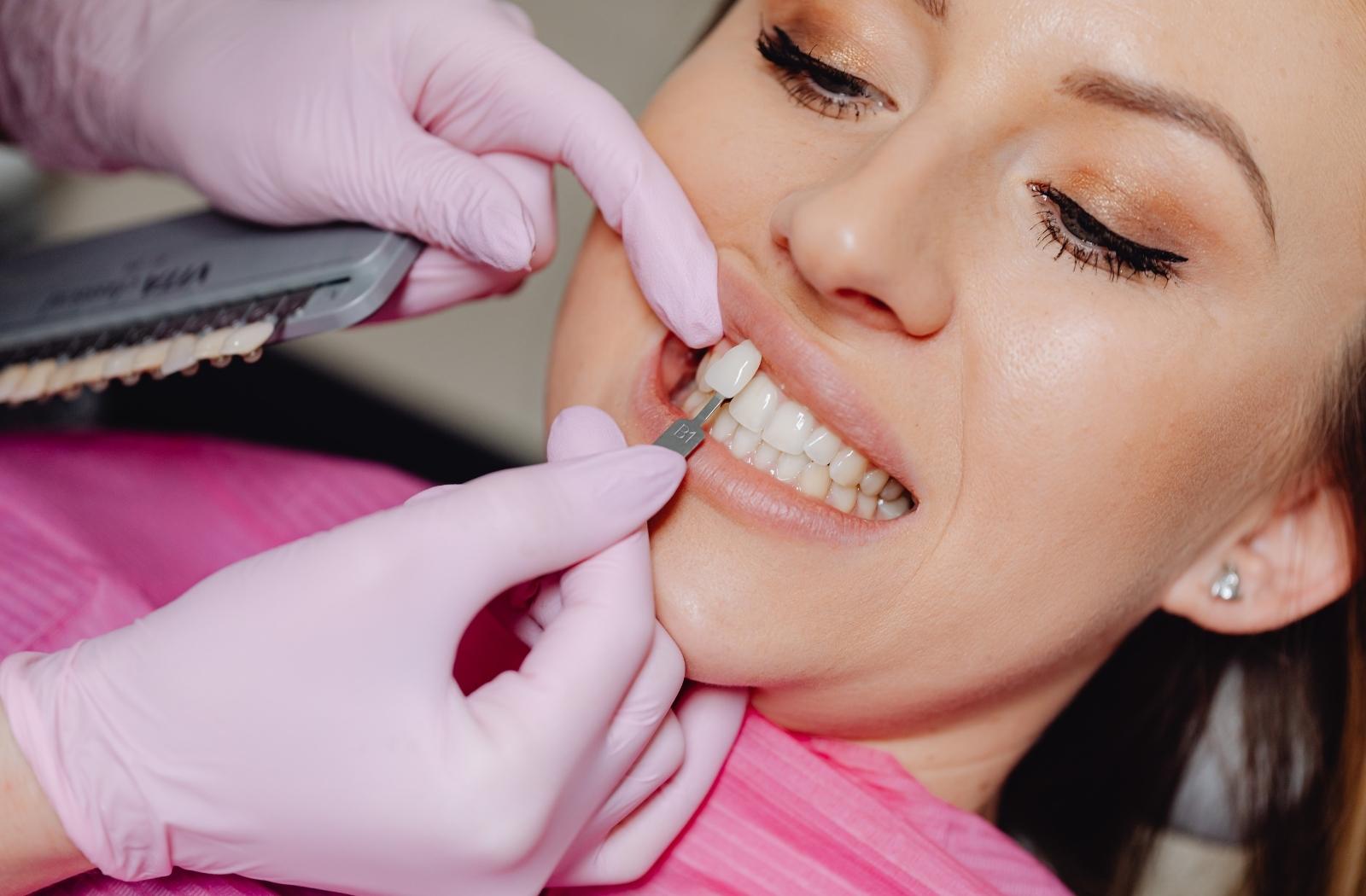Resin is the primary component used in the manufacturing of composite veneers. For the benefit of those who may not be familiar with the term, the resin is a kind of plastic. Veneers of this kind are fashioned freehand straight onto the teeth, get a lifetime of 2 to 5 years, and therefore are made of a substance that is less expensive than porcelain. Composite veneers are an option that a lot of individuals choose when they want to change the appearance of their smile, correct any discrepancies, or conceal any damaged teeth. Thus, let’s explore more about these amazing veneers!
Types of Composite Veneers:
- Direct composite Veneers:
It is a type of veneer that is put directly to your teeth and are constructed of a composite resin substance. The procedure of applying veneers is regarded as being completely painless, and it does not take a long time for a dentist to arrange your teeth for the placement of veneers.
- Indirect Composite Veneers:
The method of application is what differentiates direct composite veneers from indirect ones, the materials themselves are the same in both cases. Your teeth will be prepared in the same manner as it would be for direct composite veneers; however, the veneers themselves will be created “indirectly” beyond the mouth, either in the workplace of your dentist or at a dental clinic.
During the time that it takes to craft the indirect veneers, you will be provided with a set of provisional veneers. At the subsequent session, a coating of adhesive will be placed on your teeth before the indirect composite veneers are bonded to them. The direct form of veneers may better tolerate fractures as well as abrasions, whereas the indirect version can endure more cuts and scrapes. Nevertheless, their prices are often higher than those of direct composite veneers.
The process for composite veneers:
The first step in the procedure involves having a thorough cleaning performed on your teeth by the dentist in order to get them ready for the administration. In order to improve the material’s ability to adhere to your teeth, your dentist might have to remove a very small layer of enamel from them. When just little adjustments are required to the colour or form of your teeth, it may not be necessary to cut your teeth.
After that, the procedure will be carried out somewhat differently based on whether direct or indirect veneers are being applied. Your dentist will scrape the enamel of the teeth in preparation for the application of direct veneers so that the veneers will adhere better. The composite resin substance will then be applied to your teeth once an adhesive glue has been applied in the next step. In the last step of the process, extremely thin flakes of the composite material will be applied to the surface of your teeth.
The coatings of composite resin will be “cured,” which means they will be swiftly hardened by the dentist using a light. You as well as your dentist have the option of selecting the tone or colour that you would like for your veneers. Your dentist is able to blend the hues of composite resin in order to give your veneers a natural appearance.
In the case of indirect composite veneers, once your dentist has finished preparing your teeth for the veneers, they will next take a mould of your tooth. Indirect veneers are those that are created away from your mouth in a lab.
Whenever the indirect composite veneers are finished, your dentist will glue them to your teeth by first cleaning your teeth and then putting a form of adhesive substance to your teeth. This process will take place once the veneers are prepared. The veneers will stand a better chance of staying with the aid of this glue or stabilizing agent. The veneers made of composite material will next be bonded to your teeth.
The adhesive will be made more solid with the use of light, and then the veneers will be affixed to the teeth. After that, the dentist would polish all that and remove any remaining sharp edges that may have been left behind. The majority of patients do not need anaesthetic for the procedure. If you want to, however, when the effects of the anaesthetic have worn off, you ought to be able to resume your regular activities, including going to work.
Read Also:








